











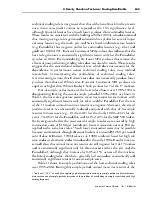
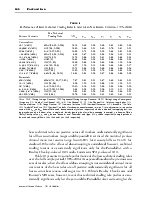
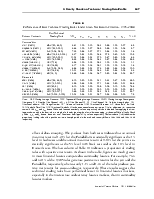
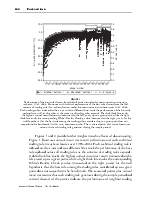
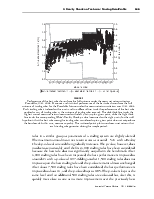
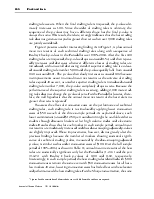
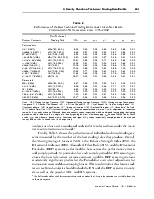
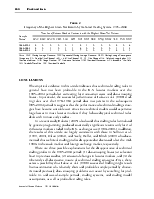
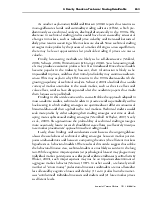
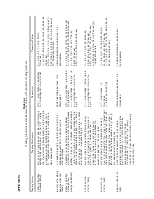
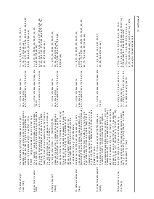
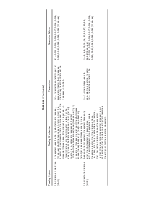

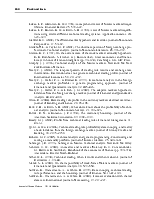
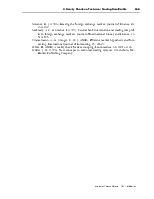
![]()
![]() A REALITY CHECK ON
A REALITY CHECK ON
![]() TECHNICAL TRADING RULE
TECHNICAL TRADING RULE
![]() PROFITS IN THE U.S. FUTURES
PROFITS IN THE U.S. FUTURES
![]() MARKETS
MARKETS
CHEOL-HO PARK
SCOTT H. IRWIN*
This article investigates the profitability of technical trading rules in U.S. futures markets during the years 1985–2004. Statistical significance of performance across the trading rules is evaluated using White’s Bootstrap Reality Check and Hansen’s Superior Predictive Ability tests, which can directly measure the effect of data snooping by testing the performance of the best rule in the context of the full universe of technical trading rules. Results show that the best rules generate statistically significant economic profits for only two of 17 futures markets after correcting for data snooping biases. This evidence suggests that technical trading rules generally have not been profitable in the U.S. futures markets. © 2009 Wiley Periodicals, Inc. Jrl Fut Mark 30:633–659, 2010
Technical analysis has been widely used among market participants in a variety of financial markets. Surveys show that the use of technical analysis has become
Funding support from the Aurene T. Norton Trust is gratefully acknowledged.
*Correspondence author, 344 Mumford Hall, 1301 West Gregory Drive, University of Illinois at UrbanaChampaign, Urbana, Illinois 61801. Tel: 217-333-6087, e-mail: sirwin@uiuc.edu
Received November 2008; Accepted July 2009
![]()
■ Cheol-Ho Park is a Research Fellow with the Korea Capital Market Institute in Seoul, Korea.
■ Scott H. Irwin is the Laurence J. Norton Chair of Agricultural Marketing in the Department of Agricultural and Consumer Economics at the University of Illinois at Urbana-Champaign, Illinois.
The Journal of Futures Markets, Vol. 30, No. 7, 633–659 (2010) © 2009 Wiley Periodicals, Inc.
Published online in Wiley InterScience (www.interscience.wiley.com). DOI: 10.1002/fut.20435
more prevalent in recent years as market participants attribute a growing role to technical analysis (e.g., Cheung & Chinn, 2001; Gehrig & Menkhoff, 2006). Recent behavioral finance models such as feedback models also support technical analysis in that noise traders who buy when prices rise and sell when prices fall (trend chasers) on average can earn higher returns than rational investors in the short-run because of “noise trader risk,” and they can survive and even dominate the market in the long-run (De Long, Shleifer, Summers, & Waldmann, 1990, 1991; Slezak, 2003).
Numerous empirical studies have investigated the profitability of technical trading rules and many have found evidence of positive trading profits (Park & Irwin, 2007). Recent evidence has shown that technical trading strategies were successful in the U.S. stock market until at least the mid-1980s (e.g., Brock, Lakonishok, & LeBaron, 1992; Ready, 2002; Sullivan, Timmermann, & White, 1999). The results for the foreign exchange market are especially interesting because various technical strategies consistently beat the benchmark across many exchange rates and over different time periods (e.g., Chang & Osler, 1999; LeBaron, 1999; Levich & Thomas, 1993; Neely, 2002; Sweeney, 1986). While less numerous, studies of futures markets also reported the profitability of various technical trading strategies over time (e.g., Lukac & Brorsen, 1990; Lukac, Brorsen, & Irwin, 1988; Silber, 1994). For example, Lukac et al. (1988) documented that technical trading systems produced statistically significant net returns and outperformed the benchmark buy-and-hold strategy over 1978–1984.
Despite positive evidence about profitability and improved procedures for testing technical trading rules, skepticism about technical trading profits remains widespread among academics. In particular, proponents of the efficient markets hypothesis argue that many of the predictable patterns that have been identified in financial markets simply may be due to chance as a result of data snooping (Fama, 1998). Malkiel (2003) states that, “Given enough time and massaging of data series, it is possible to tease almost any pattern out of most data sets” (p. 72). In a recent textbook on asset pricing, Cochrane (2001) also argues that, “Despite decades of dredging the data, and the popularity of media reports that purport to explain where markets are going, trading rules that reliably survive transactions costs and do not implicitly expose the investor to risk have not yet been reliably demonstrated” (p. 25). As the phrase “dredging the data” colorfully highlights, the skepticism appears to center on a major problem in most studies of technical analysis: data snooping.
Уважаемый посетитель!
Чтобы распечатать файл, скачайте его (в формате Word).
Ссылка на скачивание - внизу страницы.